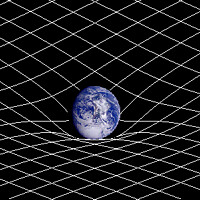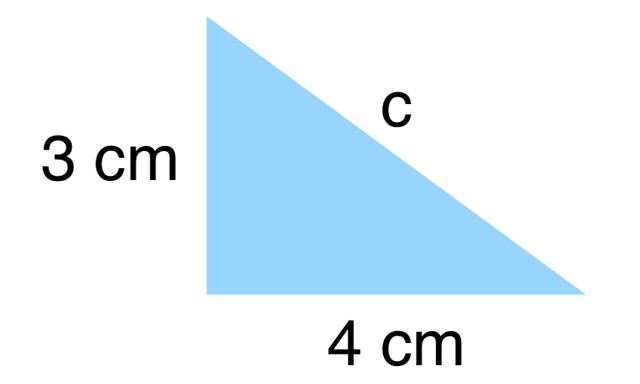Einstein Publishes General Theory of Relativity

When he was 16, Albert Einstein, having failed his exams, took a gap year. He read philosophy books, attended university lectures, and dreamed up thought experiments – this is how he would become a genius. He thought about chasing the light.
Chasing the light is the kind of experiment theoretical physicists perform in the lab of the mind. Teenage Einstein imagined running after a beam of light, and this became the start of asking himself fiendish questions – about the speed of light, about space and time, about how gravity really works. This was about a decade before E = mc2.
In 1905, Einstein published the four papers that would earn him acclaim, including the special theory of relativity and the one containing the world’s most famous equation. Yet something bugged him about special relativity: it was too … theoretical. It proved the validity of all natural laws except one: Isaac Newton’s law of universal gravity. This law had formed the bedrock of physics for 220 years, so a theory of the universe that didn’t take it into account was, in Einstein’s own word, “unsatisfactory.”
He was sitting in his office a couple of years later, gazing at the roofs outside the window. “Suddenly a thought struck me,” he would recall. “If a man falls freely, he would not feel his weight. This simple thought experiment made a deep impression on me.” It took him eight more years to solve the problem. His general theory of relativity came out in Annalen der Physik, the German physics journal that had published all his papers, on March 20, 1916.
Mathematical world view
I know what you’re thinking: roofs, light beams – what does it all mean? Good question! As Einstein himself said, “The important thing is not to stop questioning.”
 Physicists use mathematics to describe the universe. Consider Pythagoras’ theorem (a2 + b2 = c2). Use it on the triangle pictured here, and you can predict that c is 5 cm. Then draw a triangle to those measurements, and you’ll see that your prediction was right. Make the two straight sides any length at all and the theorem will always, always tell you the length of the third side. That’s the whole point – the beauty – of the mathematical world view.
Physicists use mathematics to describe the universe. Consider Pythagoras’ theorem (a2 + b2 = c2). Use it on the triangle pictured here, and you can predict that c is 5 cm. Then draw a triangle to those measurements, and you’ll see that your prediction was right. Make the two straight sides any length at all and the theorem will always, always tell you the length of the third side. That’s the whole point – the beauty – of the mathematical world view.
That’s why Einstein took a decade each time to formulate his two theories; they had to predict measurements as vast as the cosmos, not to mention conform to the theories of previous thinkers such as Newton and Galileo. Well, except when his theory said that Newton’s was obsolete. Classical mechanics needed an update.
For two centuries, gravity was presented as a force between two objects, like apple and Earth or Earth and sun, traveling through “empty” space. But where did this mysterious force come from? Newtonian mathematics didn’t explain. So Einstein re-imagined gravity.
Curved spacetime
 Certain physicists talk about spacetime, not the two separately, because every object occupies time as well as space. Consider the moon. What we see is always what the actual thing was 1.25 seconds ago, because that’s how long light takes to reach us from there. Since we’re all traveling through time continuously, from past to present, we’re traveling through space nonstop too.
Certain physicists talk about spacetime, not the two separately, because every object occupies time as well as space. Consider the moon. What we see is always what the actual thing was 1.25 seconds ago, because that’s how long light takes to reach us from there. Since we’re all traveling through time continuously, from past to present, we’re traveling through space nonstop too.
It gets weirder. Astronomical objects bend this multidimensionality like a blanket around themselves. This is why the moon orbits the Earth, and the Earth orbits the sun – like a marble around a bowling ball on a trampoline. Our world is hurtling across the part of spacetime wrapped around the densest mass in the system, and it’s taking us along for the ride. We experience this motion as gravity.
So, according to general relativity, a man doesn’t fall because gravity is pulling him to the ground, but because the Earth is always traveling continuously in curved spacetime. If it were flat, the man might float across the air until he reached the next roof. Instead, he follows this warped trajectory until the ground stops it. The rough illustration here (not drawn to scale at all) attempts to show snapshots of this process.
Wacky, I know … even if we could understand it. When it was first verified three years later, even fellow scientists had to admit the theory was inscrutable! That first verification showed that even light from distant stars bends around the sun as it travels across the universe to reach us.
With this theory, this stupendous thought experiment supported by 10 impenetrable field equations, Einstein predicted several astrophysical phenomena back when no one had the instruments to prove they existed. Now consider Allan Adams’ recent TED talk about a discovery made at the LIGO observatory in September 2015. The observatory’s detectors had picked up the sound of gravitational waves made by a couple of black holes as they crashed into each other in a distant galaxy 1.3 billion years ago. Einstein’s equations had calculated that when dying stars collapse or collide, they ripple spacetime, creating gravitational waves. The waves heard at LIGO rippled through the Earth, finally announcing their existence to us.
The physicists were ecstatic, and I just couldn’t understand why – until I read about general relativity. One hundred years later, and Einstein’s mathematical world view is still correct.
Will it last another hundred? Well … spacetime will tell.
Chasing the light is the kind of experiment theoretical physicists perform in the lab of the mind. Teenage Einstein imagined running after a beam of light, and this became the start of asking himself fiendish questions – about the speed of light, about space and time, about how gravity really works. This was about a decade before E = mc2.
In 1905, Einstein published the four papers that would earn him acclaim, including the special theory of relativity and the one containing the world’s most famous equation. Yet something bugged him about special relativity: it was too … theoretical. It proved the validity of all natural laws except one: Isaac Newton’s law of universal gravity. This law had formed the bedrock of physics for 220 years, so a theory of the universe that didn’t take it into account was, in Einstein’s own word, “unsatisfactory.”
He was sitting in his office a couple of years later, gazing at the roofs outside the window. “Suddenly a thought struck me,” he would recall. “If a man falls freely, he would not feel his weight. This simple thought experiment made a deep impression on me.” It took him eight more years to solve the problem. His general theory of relativity came out in Annalen der Physik, the German physics journal that had published all his papers, on March 20, 1916.
Mathematical world view
I know what you’re thinking: roofs, light beams – what does it all mean? Good question! As Einstein himself said, “The important thing is not to stop questioning.”
 Physicists use mathematics to describe the universe. Consider Pythagoras’ theorem (a2 + b2 = c2). Use it on the triangle pictured here, and you can predict that c is 5 cm. Then draw a triangle to those measurements, and you’ll see that your prediction was right. Make the two straight sides any length at all and the theorem will always, always tell you the length of the third side. That’s the whole point – the beauty – of the mathematical world view.
Physicists use mathematics to describe the universe. Consider Pythagoras’ theorem (a2 + b2 = c2). Use it on the triangle pictured here, and you can predict that c is 5 cm. Then draw a triangle to those measurements, and you’ll see that your prediction was right. Make the two straight sides any length at all and the theorem will always, always tell you the length of the third side. That’s the whole point – the beauty – of the mathematical world view.That’s why Einstein took a decade each time to formulate his two theories; they had to predict measurements as vast as the cosmos, not to mention conform to the theories of previous thinkers such as Newton and Galileo. Well, except when his theory said that Newton’s was obsolete. Classical mechanics needed an update.
For two centuries, gravity was presented as a force between two objects, like apple and Earth or Earth and sun, traveling through “empty” space. But where did this mysterious force come from? Newtonian mathematics didn’t explain. So Einstein re-imagined gravity.
Curved spacetime
 Certain physicists talk about spacetime, not the two separately, because every object occupies time as well as space. Consider the moon. What we see is always what the actual thing was 1.25 seconds ago, because that’s how long light takes to reach us from there. Since we’re all traveling through time continuously, from past to present, we’re traveling through space nonstop too.
Certain physicists talk about spacetime, not the two separately, because every object occupies time as well as space. Consider the moon. What we see is always what the actual thing was 1.25 seconds ago, because that’s how long light takes to reach us from there. Since we’re all traveling through time continuously, from past to present, we’re traveling through space nonstop too.It gets weirder. Astronomical objects bend this multidimensionality like a blanket around themselves. This is why the moon orbits the Earth, and the Earth orbits the sun – like a marble around a bowling ball on a trampoline. Our world is hurtling across the part of spacetime wrapped around the densest mass in the system, and it’s taking us along for the ride. We experience this motion as gravity.
So, according to general relativity, a man doesn’t fall because gravity is pulling him to the ground, but because the Earth is always traveling continuously in curved spacetime. If it were flat, the man might float across the air until he reached the next roof. Instead, he follows this warped trajectory until the ground stops it. The rough illustration here (not drawn to scale at all) attempts to show snapshots of this process.
Wacky, I know … even if we could understand it. When it was first verified three years later, even fellow scientists had to admit the theory was inscrutable! That first verification showed that even light from distant stars bends around the sun as it travels across the universe to reach us.
With this theory, this stupendous thought experiment supported by 10 impenetrable field equations, Einstein predicted several astrophysical phenomena back when no one had the instruments to prove they existed. Now consider Allan Adams’ recent TED talk about a discovery made at the LIGO observatory in September 2015. The observatory’s detectors had picked up the sound of gravitational waves made by a couple of black holes as they crashed into each other in a distant galaxy 1.3 billion years ago. Einstein’s equations had calculated that when dying stars collapse or collide, they ripple spacetime, creating gravitational waves. The waves heard at LIGO rippled through the Earth, finally announcing their existence to us.
The physicists were ecstatic, and I just couldn’t understand why – until I read about general relativity. One hundred years later, and Einstein’s mathematical world view is still correct.
Will it last another hundred? Well … spacetime will tell.
You Should Also Read:
Gravity - Cosmic Glue
Einstein's Eclipse
Gravitational Waves – What Are They?

Related Articles
Editor's Picks Articles
Top Ten Articles
Previous Features
Site Map
Content copyright © 2023 by Lane Graciano. All rights reserved.
This content was written by Lane Graciano. If you wish to use this content in any manner, you need written permission. Contact Lane Graciano for details.







